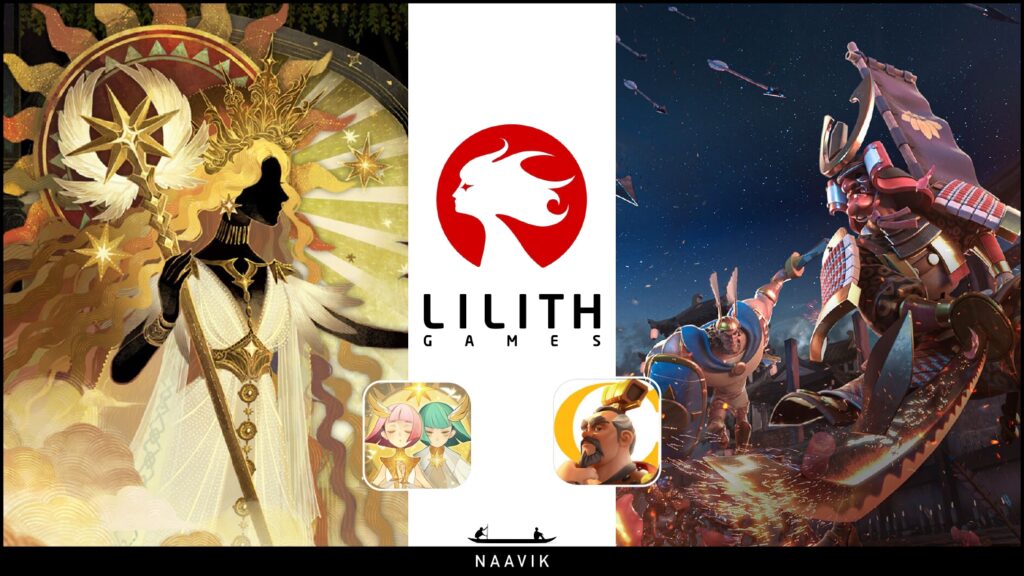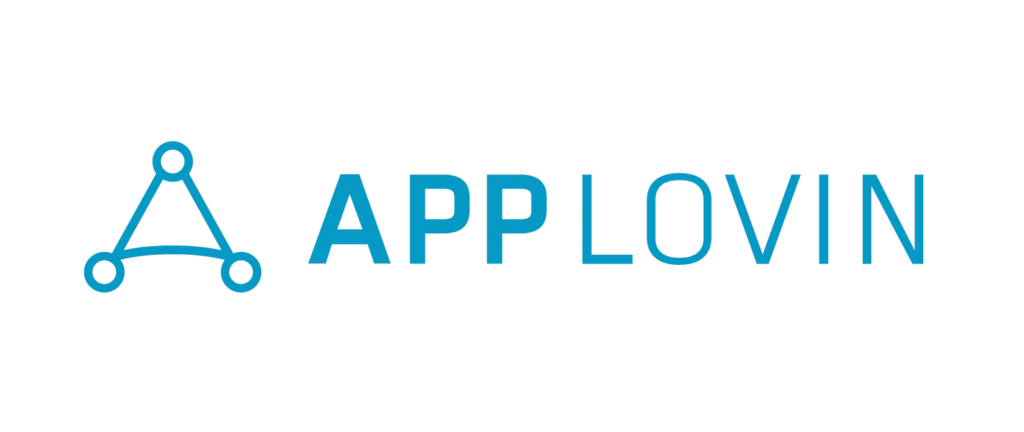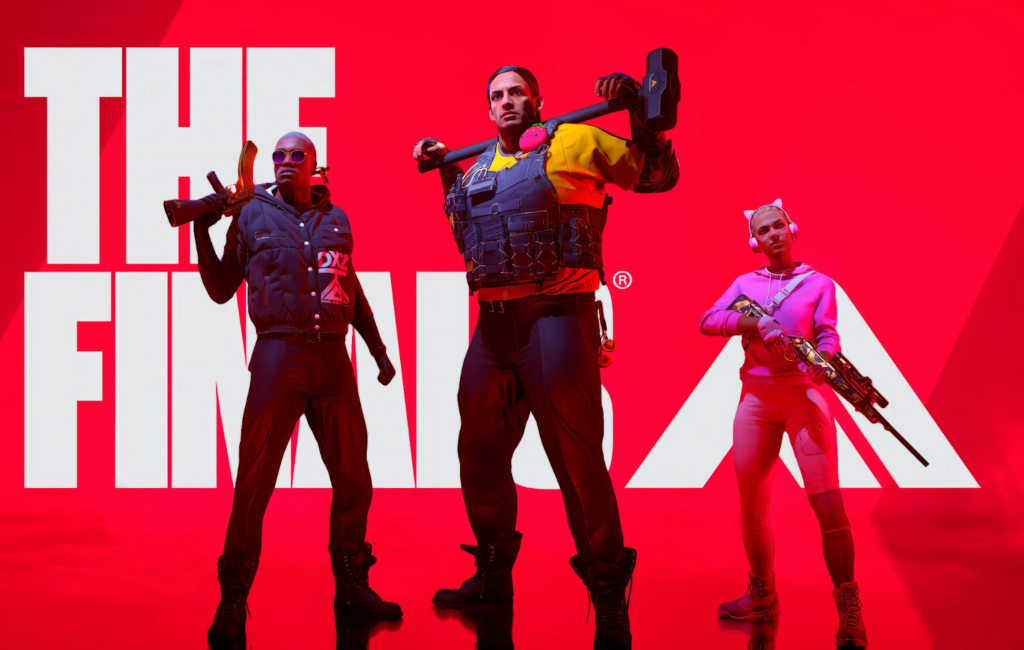
The Finals is a AAA competitive shooter that made a big splash at launch in December, touted by many as the next big FPS. (For those not up to speed, here’s some gameplay.)
The developer behind the game, Embark Studios, is perhaps less well known. It was founded in 2018 by the former Executive Vice President of EA’s Worldwide Studios (and also former CEO of Dice) Patrick Söderlund and a team of tenured EA/Dice executives. Embark says its goal is to "create new types of interactive entertainment and simulated virtual online worlds enabled by massive leaps in technology."
The lofty aim and pedigree of the founders helped it secure a $41M minority investment and publishing deal from Nexon, and within a year, the founders made enough progress to secure another $96M investment, again from Nexon, which also acquired a majority stake in the studio and future rights to buy out the company's founders. Nexon exercised its rights to fully acquire Embark in 2021, with the cumulative payments across all investments totaling about $300M.
The Finals is the first installment of three major projects Embark has been working on since 2018. We’ll be hearing a lot from Embark in the years ahead, so in this article, we'll dive into some of the innovative ways technology is being used at the studio, discuss the performance of The Finals, and briefly cover the two other projects in Embark's pipeline.
Technology
Embark’s founders built a proprietary technology stack to help differentiate the studio, and has been highlighting the potential for AI to create new patterns of play and accelerate game development since its inception in 2018.
The company has also embraced photogrammetry and created tools to help convert images into game-ready assets at a fraction of the time it takes to build those assets manually.
Photos of Tenerife…

… converted into 256km2 Unreal Engine demo
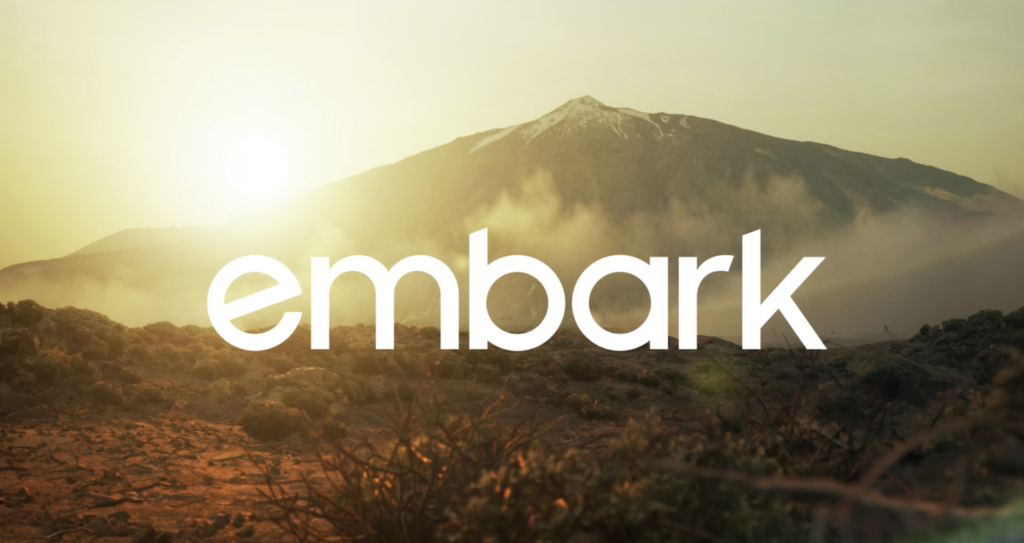
Embark also uses a procedurally aided process in character creation, significantly reducing the time it takes to create and iterate character models. In animation, the company has leveraged machine learning to train NPCs to move, interact, and respond to their environments. The company also leverages AI for character voice lines, reducing the time required to add new audio from months to hours.
Beyond art and animation, Embark has also pushed technical boundaries at the backend, including technology that enables the fast-paced movement and destruction of the environment in The Finals to take place on the server side rather than being processed on the players’ hardware. It has developed an open-source tool called Quilkin in partnership with Google Cloud, a user datagram protocol proxy for game servers that allows game studios to access the same secure and optimized network capabilities as larger game companies.
It's evident these investments have started to pay dividends, with fewer than a hundred employees working on The Finals at its peak. According to the CEO of Nexon, Embark has been able to update the game at a “pace not seen before”: 15 patches and hotfixes since launch.
These results wouldn’t be possible without the backing of Nexon, which allowed Embark to invest five years in honing its proprietary technology stack before launching its first game.
Its Games
The Finals
This is a free-to-play FPS that entered open beta in late 2023 and surpassed all expectations, gathering 7.5M downloads and becoming the No. 1 wishlisted game on Steam despite almost no marketing for the playtests.
The core game mode, "Cash Out", centers around four teams of three players fighting to secure the most cash by the end of the round. Players can choose between three classes, each with a different mix of damage, speed, tankiness, and utility — and can be further customized based on the player's playstyle. Teams fight to secure cash boxes that spawn across the map and must bring them to designated vaults to cash out. The cash out takes time, and all teams are alerted that the cash out is taking place and rush to attack the defending team with a chance to steal the winnings.
"Cash Out" takes the best concepts from many team-based FPS games — the "capture the flag" gameplay from old-school Halo, the plant/defend/retake loop from Counter Strike, simplified class/skill trees from Overwatch — and adds that to the gunplay and smooth movement you would expect from a modern AAA shooter.
One of the game's biggest selling points is that the entire map is destructible. This feature allows for player experimentation and unique moments that make every play session feel unique.
When the game officially launched in December 2023, its player count peaked at over 240K concurrent players on Steam, pushing into the territory usually reserved for the FPS heavyweights.

In its first week after launch, the game sustained close to approximately 200K concurrent players on Steam, but over the next few weeks, the player base started to decline steadily, finally stabilizing at about 20K to 30K concurrent players.
One of the biggest challenges the game faces is that it competes in the top-heavy desktop/console FPS market, where players gravitate toward the same few games year after year. This is best illustrated by looking at the top-grossing shooters on Steam over the past few years — the same few titles maintain their position, and very few new games find recurring success. We covered this topic in more detail in our State of the FPS Market digest.
Another challenge for The Finals is that it's heavily dependent on team play. In the game's core “Cash Out” mode, players are matched into teams of three, and communication and cooperation play a significant role. It's almost impossible to win a game without all three players on the same page and is best played with friends.
The developer also shot itself in the foot by not having a text chat function, which hurts the solo player experience for those who don’t enjoy voice chat. Overall, as the game's novelty wears off and as the "tourists" are leaving, the game is suffering from the unwinding of network effects.

The game’s recent struggle to retain players is exacerbated by complaints about the matchmaking system, challenges with stamping out cheaters, and a lack of diversity in content, with only three maps at launch.
Another missing piece is the lack of investment in the content creator ecosystem, especially with mainstream creators, which drives a lack of player awareness and excitement about new updates.
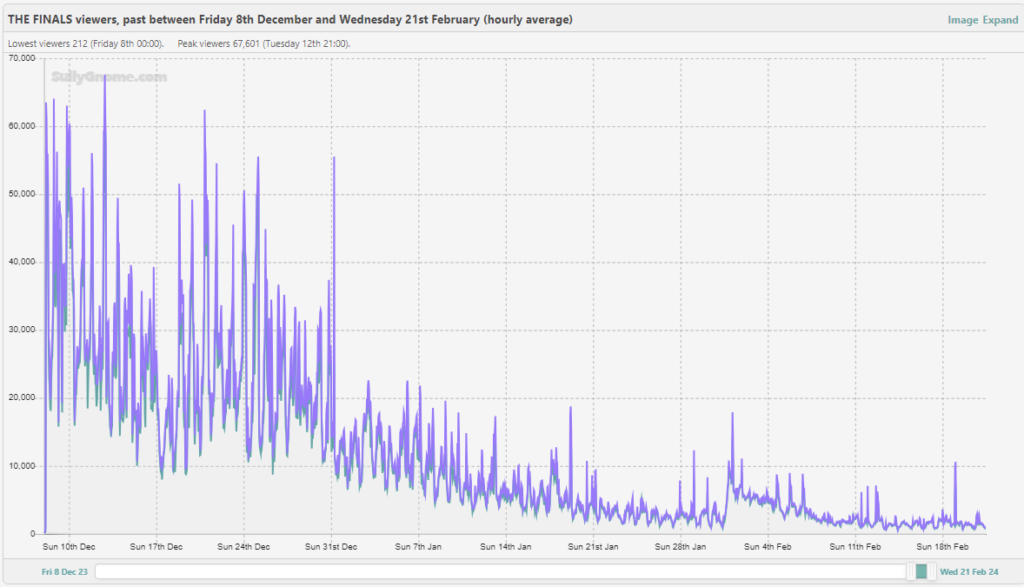
These challenges don't take away from the fact that The Finals is a solid game that can clearly reach a huge audience. The gameplay likely satisfies niche players compared to the broad appeal of battle royales, but it has the potential to carve out its own space within the broader FPS market, similar to Tom Clancy's Rainbow Six Siege.
Embark is heavily invested in the game, releasing 15 patches and hotfixes since the game launched in December to introduce new content and help address the issues discussed. The developer has also heard feedback on the solo-player experience and is experimenting with ways to address the issue, like testing a single player game mode.
In Nexon’s Q4 ‘23 earnings release, the company stated The Finals garnered more than 10M installs in two weeks, decisively outperforming internal estimates. It also noted the game launched at "a fraction" of the marketing spend of comparable AAA titles released in the same time frame.
Nexon believes The Finals "represents Nexon's fourth major franchise pillar" and plans on investing in a "robust sustained marketing campaign" starting with Season 2 of the game, which launches in March.
The launch of Season 2 and the broader marketing campaign will be a critical juncture for the game to rekindle the enthusiasm of its large install base and potentially attract new players. The game will also benefit from the continued support of Nexon’s live ops team, which has a track record of growing enduring franchises like MapleStory to help The Finals achieve its goal of becoming a “forever game.”
In summary, there’s good reason to be optimistic about the future of The Finals, and the game will likely see a rebound once Season 2 launches.
ARC Raiders
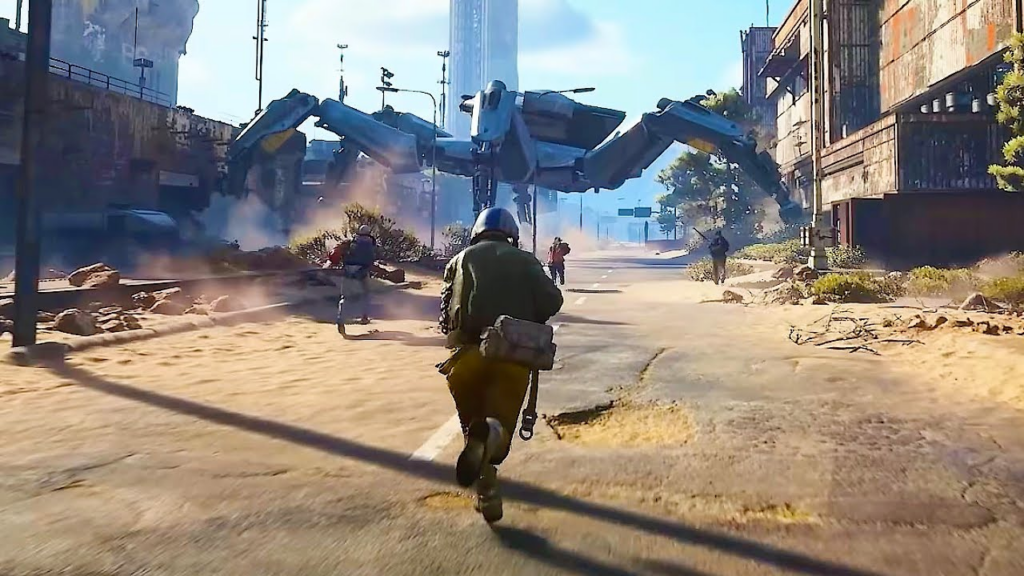
Originally slated to be Embark's debut game, ARC Raiders was designed as a third-person co-op PVE shooter, as you can see in the reveal trailer.
It is set in a dystopian future where a mysterious mechanical threat, ARC (read giant robot monster ), ravages the earth. Throughout the development process, the team leveraged many of the tools discussed earlier, including the use of proprietary photogrammetry tools to convert satellite images of Tenerife into interactive virtual landscapes and machine learning to animate NPC movement. The game also shares a large code base with The Finals, which hopefully means we can see the same fast-paced content releases and iteration once the game is released.
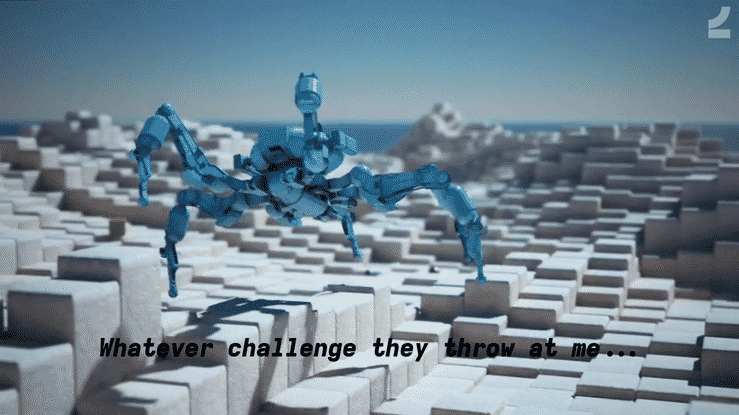
After early playtests in 2022, Embark decided the game needed an overhaul and shifted the game into a PvPvE extraction shooter. As we've covered previously, successfully breaking into the extraction shooter market has proven to be more challenging than many anticipated, and it’s left a trail of dead or canceled games. Escape from Tarkov, which many people point to as the genre's progenitor, continues to dominate the category, generating about £65M of revenue in 2022 and more than £300M since launch.
The revamped ARC Raiders went into closed alpha in June 2023, and the player reception seemed mixed. Since the closed alpha, the market for extraction shooters has only gotten more crowded with the hit co-op extraction shooter Helldivers 2 seeming to satisfy a similar niche as ARC Raiders. It's unclear when the game is expected to launch, but it currently sits at No. 29 on Steam’s wishlist ranking, a solid indicator of players' anticipation for the game.
Wim

In a departure from the studio’s shooter roots, wim is a creative sandbox platform with the goal of enabling anyone to create and share games, as you can see in this trailer. It reflects Embark’s view that the next big frontier for gaming is to allow anyone to create games that can be played with others.
Based on limited public disclosure around the game, wim seems to differentiate itself from the other UGC platforms by embracing a cozy art style, and introduce tools that not only expand the range of creative expression, but also lower the barriers to entry for creators. For example, the company is looking to apply the machine learning tools it developed to animate the giant robot antagonists in ARC Raiders into wim so that players with no game development experience can animate movements.
Embark has also demoed tools that can help creators by suggesting relevant items based on both semantic and visual similarities. The company is also looking to leverage AI to make its NPCs more realistic by layering in personality and improving their understanding of their surroundings.
Based on an old blog post from the CEO in 2019, the company dedicated roughly 20 of its 80-strong team to work on its “long-term mission” of creating wim, while the rest of Embark focused on the two shooter games.
Since then, the studio has more than tripled in size, and the team dedicated to the shooter games has probably grown at a much more rapid pace, especially with the increasing demands from the success of The Finals. Clearly, the studio leadership recognizes the challenge of building and scaling a successful UGC platform, and it is not betting the house on wim’s success.
The game is currently going through closed playtests, and its official launch date has yet to be announced. If you’re interested, more details on the game can be found here.
Conclusion
Although The Finals has faced some challenges since its launch, it's clear from the early player reception that the game has the potential to carve out its own niche within the shooter category. Clearly, Nexon and Embark are both fully invested in the game and believe in its potential to become a cornerstone franchise for their businesses. The two other projects in Embark's pipeline also reflect big ambitions, and if The Finals is a good indicator of the company's ability to challenge the status quo, ARC Raiders and wim could do the same.
The studio’s investment in building a technology-first studio should differentiate Embark in the long run as it allows the firm to innovate in play patterns, and iterate more quickly and efficiently than its peers.
As the company’s success with The Finals takes shape in Nexon’s publicly reported numbers, there’s no doubt other game developers will take notice and look to apply similar practices.
A Word from Our Sponsor: RALLYHERE

The Backend Platform Trusted by Over 200 Million Gamers Worldwide
Already trusted by over 200 million gamers worldwide, RallyHere is the Gaming Backend Platform and Service founded by the makers of SMITE, Paladins, and Rogue Company. With over 20 years of experience, our veteran teams have successfully built, launched and grown cross-platform live-service games.
Game developers leverage RallyHere's expertise and tooling, covering matchmaking, cross-platform accounts, server optimization and orchestration, real-time live ops management, player progression, and community engagement, to streamline their development processes, increase speed to market, and maximize their resources.
Want to know how RallyHere can help you with your live service game?
Balatro: Roguelike Poker Hits a Royal Flush
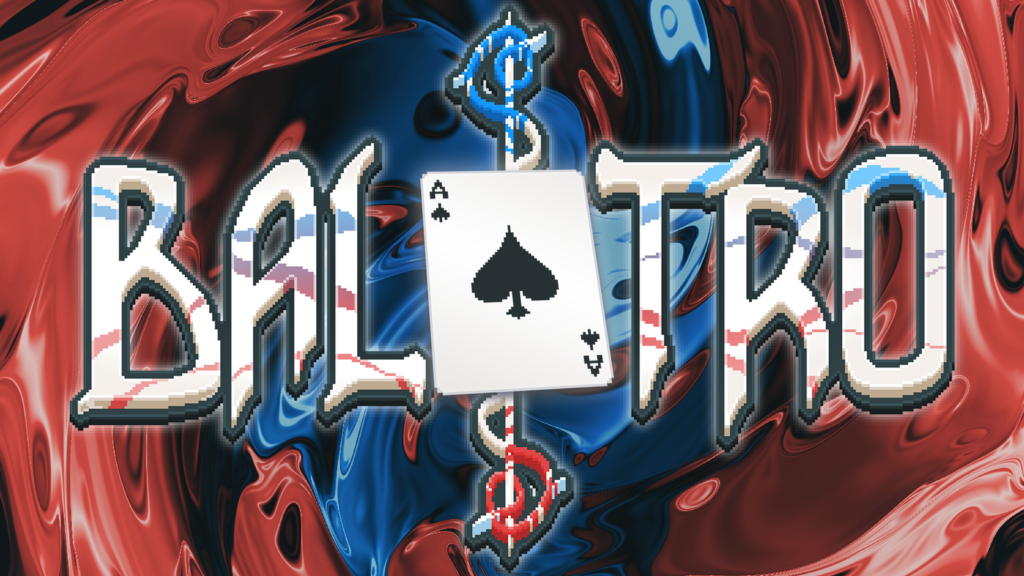
Developer: LocalThunk
Publisher: Playstack
Platform: PC/Console
Status: Launched
Genre: Roguelike deck builder
Gameplay: Link
What Is It?
Balatro, the recent indie hit, is a roguelike deck builder. It’s marketed as poker-based, but is actually from the Cantonese card game Big 2, which has similar hands as poker. The elevator pitch is simple — “The poker roguelike” — and intriguing enough that if you’re interested in card games at all, it will pique your interest.
However, it’s much less Slay the Spire, and more Luck Be a Landlord, which makes sense as it was a big inspiration to developer LocalThunk.
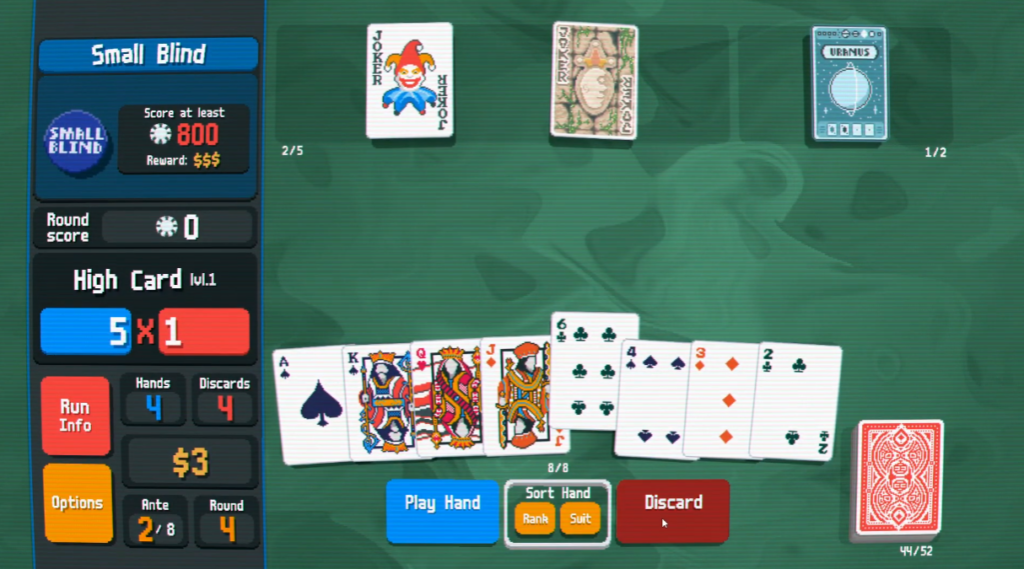
The loop for Balatro is very similar to Luck Be a Landlord (LBL). The poker aspect — the playing cards and the poker hands — determine your round score. Like LBL, you can acquire items (Jokers in Balatro) that provide modifiers that can boost your score. Carefully choosing the right Jokers that can synergize to exponentially boost your round score is the name of the game. It’s a formula that’s worked well in a slots-based game — LBL — but now in a card-based game.
How Is It Doing?
The big media hoo-ha has been all about how it was profitable one hour after release, and is the fastest selling game by publisher Playstack. Estimates from GamingAnalytics.info show about 785K players across Steam, Playstation, and Xbox, giving us a gross revenue estimate of $11.8M.
Big kudos to LocalThunk and Playstack for that achievement, especially considering it was almost single-handedly developed by LocalThunk (Except the music was outsourced.)
Comparing Balatro to Slay the Spire and Inscryption, the top two selling premium card games on Steam, Balatro looks poised to outperform those indie darlings.
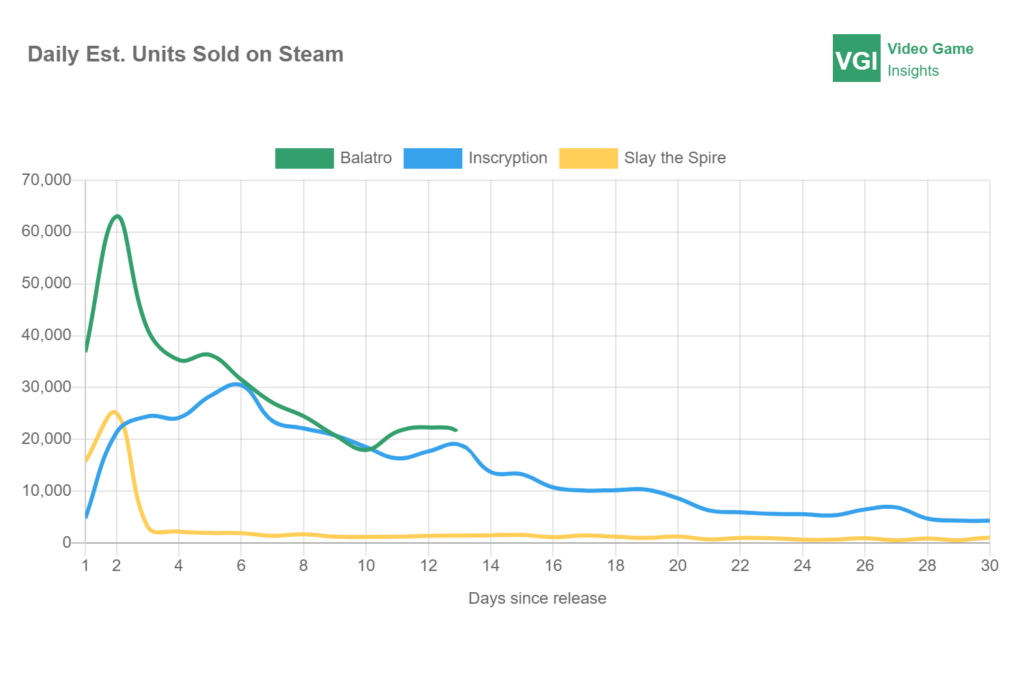
However, this isn’t the complete picture, as of the top 20 card games by units sold on Steam, more than half are F2P.
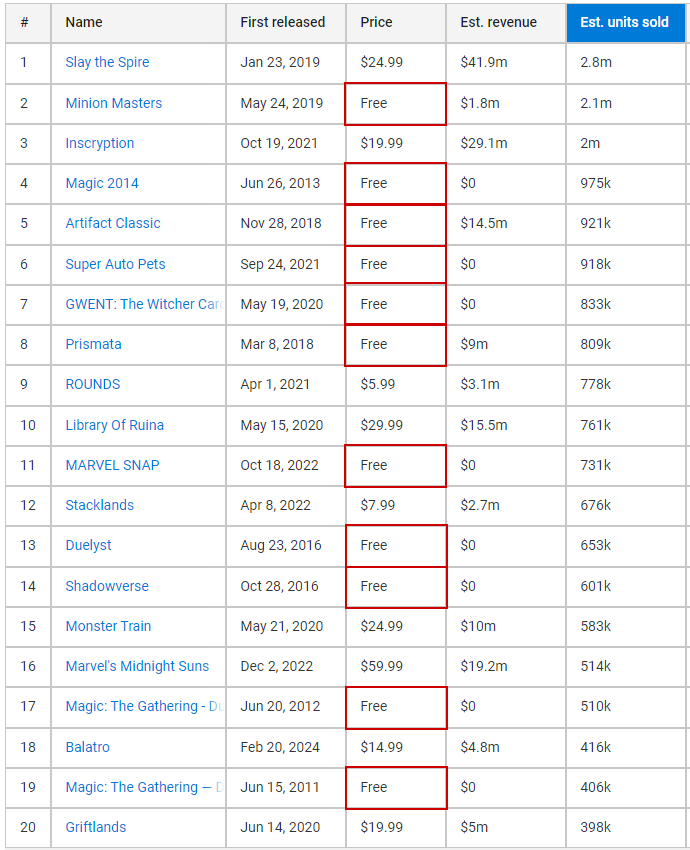
This article from GameDiscoverCo estimates Marvel Snap’s Steam gross revenue at $19M as of October 2023. So revenue-wise, Balatro still has a ways to go to compete against the biggest players. But then, it doesn’t have to.
What Can We Learn from It and What’s in Its Future?
Ever since Slay the Spire was released in 2019, there’s been a steady increase of card games being released on Steam.
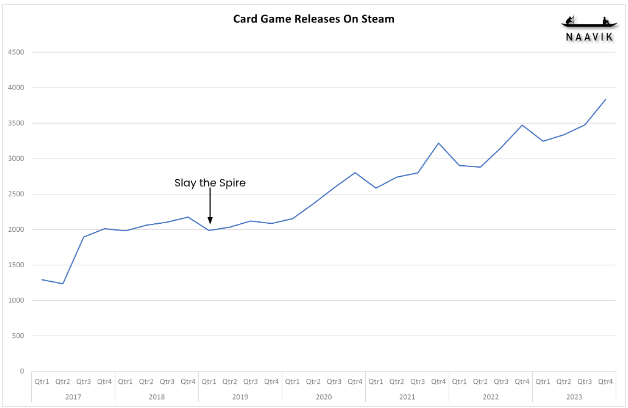
However, besides Valve’s Artifact, none have inspired such fervor so quickly after launch. Balatro peaked at 63K daily units sold on day two, and even Slay the Spire and Inscryption peaked at around 25K-30K daily sales. (Artifact peaked at 172K downloads on day two.)
Why So?
It takes the familiar (poker) and adds a twist (roguelike deck building), and centers it around a proven core loop (Luck be a Landlord).
It also looks and plays nothing like the other deck-building card games out there, helping it stand out.

To be fair, the formula described above is something almost every developer aims for, and there’s also a heavy amount of luck involved, something completely acknowledged by LocalThunk. However, where I think many go wrong is in the ratio of those elements. How much of the familiar, proven, and fresh elements you need is more an art than science, and the only advice is to test early, and test often.
What’s next for Balatro? According to LocalThunk, a mobile version is on the cards. But I believe what will happen there is that a mobile developer (perhaps Habby) will take the core concept and remake a mobile-first version of it that may eclipse its original inspiration. After all, we’ve seen the same thing happen with Archero and Survivor.io.
Our Design Consulting Services
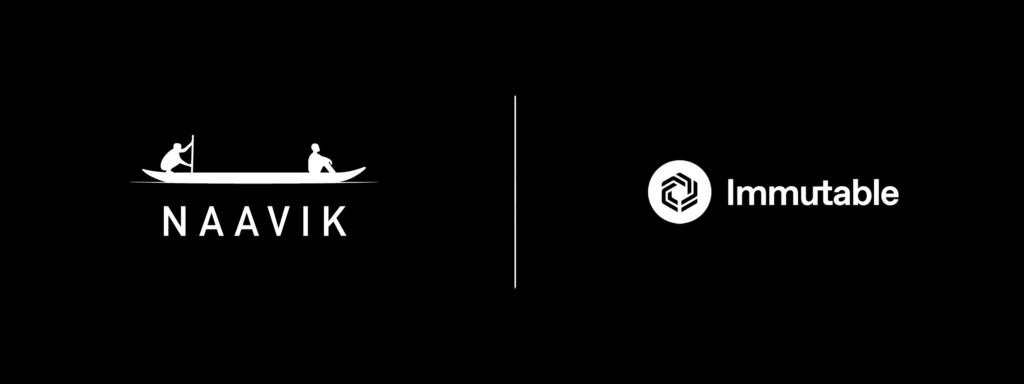
Today, we’re highlighting our full lifecycle design services. This includes customised game deconstructions, core/metagame concepting, feature design, economy modeling, gameplay balancing, monetisation design, and much more across platforms and genres. Here is what one of our clients had to say.

“I worked with Naavik for over a year on our RPG and it was quite possibly one of the best consultation and cooperative design experiences I've ever had. They quickly demonstrated their expertise in ideation, documentation, communication, and iterative design. I would gladly make use of Naavik's skills again and I would encourage anyone else looking for expert game design support to reach out to them ASAP!”
- Josiah Wallace, Senior Game Design Manager at Immutable
If you’d like to learn more and engage us, reach out here! Also check out our expanded consulting service portfolio here.




